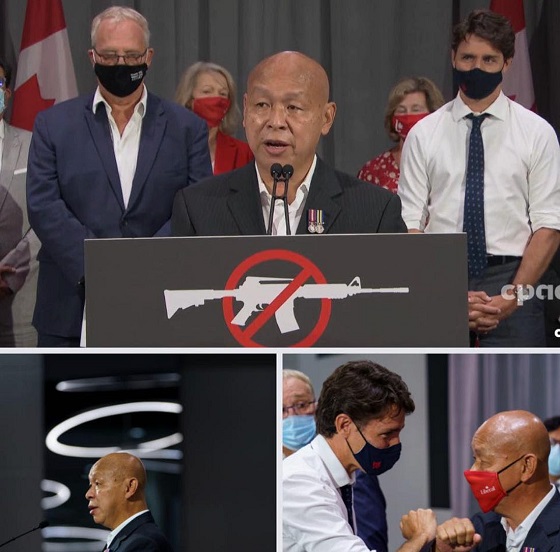Alberta
Alberta joins provincial opposition to federal Clean Fuel Regulations gas tax
Alberta joins provinces opposing federal regulations: Minister Schulz
Minister of Environment and Protected Areas Rebecca Schulz sent a letter to federal Minister of Environment and Climate Change Steven Guilbeault on the upcoming Clean Fuel Regulations:
“Today, I sent a letter to Minister Steven Guilbeault informing him that the Government of Alberta is joining the Government of Saskatchewan and the Atlantic provinces in calling on the federal government to immediately halt the implementation of the federal Clean Fuel Regulations on July 1.
“The federal Clean Fuel Regulations will harm provincial economies in Alberta, Saskatchewan and Atlantic Canada. Combined with the federal government’s carbon tax increase, higher gasoline and diesel costs are expected, putting added cost pressures on other goods and services across the country.
“Now is not the time to drive up prices at the pump and increase expenses for vulnerable households, businesses and industries. Families and businesses cannot continue to afford reckless cost and tax increases imposed by the federal government.
“Alberta has released an Emissions Reduction and Energy Development Plan which is our best path to enhancing our position as a global leader in emissions reductions, clean technology and innovation, and sustainable resource development. It includes a realistic aspiration to have a carbon-neutral economy by 2050, without compromising the affordable, reliable and secure energy that we all rely on.
“What we need now is a concrete plan that will help move us forward in realistic and innovative ways. The federal government needs to stop moving ahead with their costly plans until a path forward can be found that supports all Canadians.”
The letter
Dear Minister Guilbeault:
On behalf of the Government of Alberta, I am joining the Government of Saskatchewan and the Atlantic provinces in calling on the federal government to immediately halt the implementation of the upcoming Federal Clean Fuel Regulations.
Alberta is committed to reducing emissions while keeping energy reliable, secure, and affordable. Our Emissions Reduction and Energy Development Plan works towards a carbon neutral economy; commits to reviewing renewable fuel standards; increases minimum requirements for blending for ethanol and bio based diesel; includes fuel emission intensity reductions; and other major steps forward. We believe this is a path forward that will work for our unique circumstances.
The Federal Clean Fuel Regulations, however, will harm provincial economies in Alberta, Saskatchewan and Atlantic Canada. A plan that unfairly increases costs on families and does not account for regional differences is no plan at all.
The Office of the Parliamentary Budget Officer (PBO) confirmed this in a May 2023 report that found that the Clean Fuel Regulations would hit Alberta, Saskatchewan, and the Atlantic provinces the hardest. The PBO’s report estimated that the cost increase to the average Alberta households in 2030 would be $1,117.
Canadians are already struggling with high inflation. Adding fuel to the fire by hiking the cost of gasoline and diesel will be devastating.
This issue requires immediate attention. Given the pending implementation date of July 1, 2023, Alberta is requesting that the regulations be halted until a path forward can be found that supports all Canadians and addresses the concerns of Alberta, Saskatchewan, and the Atlantic provinces.
Sincerely,
Rebecca Schulz
Minister of Environment and Protected Areas
Alberta
Big win for Alberta and Canada: Statement from Premier Smith

Premier Danielle Smith issued the following statement on the April 2, 2025 U.S. tariff announcement:
“Today was an important win for Canada and Alberta, as it appears the United States has decided to uphold the majority of the free trade agreement (CUSMA) between our two nations. It also appears this will continue to be the case until after the Canadian federal election has concluded and the newly elected Canadian government is able to renegotiate CUSMA with the U.S. administration.
“This is precisely what I have been advocating for from the U.S. administration for months.
“It means that the majority of goods sold into the United States from Canada will have no tariffs applied to them, including zero per cent tariffs on energy, minerals, agricultural products, uranium, seafood, potash and host of other Canadian goods.
“There is still work to be done, of course. Unfortunately, tariffs previously announced by the United States on Canadian automobiles, steel and aluminum have not been removed. The efforts of premiers and the federal government should therefore shift towards removing or significantly reducing these remaining tariffs as we go forward and ensuring affected workers across Canada are generously supported until the situation is resolved.
“I again call on all involved in our national advocacy efforts to focus on diplomacy and persuasion while avoiding unnecessary escalation. Clearly, this strategy has been the most effective to this point.
“As it appears the worst of this tariff dispute is behind us (though there is still work to be done), it is my sincere hope that we, as Canadians, can abandon the disastrous policies that have made Canada vulnerable to and overly dependent on the United States, fast-track national resource corridors, get out of the way of provincial resource development and turn our country into an independent economic juggernaut and energy superpower.”
Alberta
Energy sector will fuel Alberta economy and Canada’s exports for many years to come

From the Fraser Institute
By any measure, Alberta is an energy powerhouse—within Canada, but also on a global scale. In 2023, it produced 85 per cent of Canada’s oil and three-fifths of the country’s natural gas. Most of Canada’s oil reserves are in Alberta, along with a majority of natural gas reserves. Alberta is the beating heart of the Canadian energy economy. And energy, in turn, accounts for one-quarter of Canada’s international exports.
Consider some key facts about the province’s energy landscape, as noted in the Alberta Energy Regulator’s (AER) 2023 annual report. Oil and natural gas production continued to rise (on a volume basis) in 2023, on the heels of steady increases over the preceding half decade. However, the dollar value of Alberta’s oil and gas production fell in 2023, as the surging prices recorded in 2022 following Russia’s invasion of Ukraine retreated. Capital spending in the province’s energy sector reached $30 billion in 2023, making it the leading driver of private-sector investment. And completion of the Trans Mountain pipeline expansion project has opened new offshore export avenues for Canada’s oil industry and should boost Alberta’s energy production and exports going forward.
In a world striving to address climate change, Alberta’s hydrocarbon-heavy energy sector faces challenges. At some point, the world may start to consume less oil and, later, less natural gas (in absolute terms). But such “peak” consumption hasn’t arrived yet, nor does it appear imminent. While the demand for certain refined petroleum products is trending down in some advanced economies, particularly in Europe, we should take a broader global perspective when assessing energy demand and supply trends.
Looking at the worldwide picture, Goldman Sachs’ 2024 global energy forecast predicts that “oil usage will increase through 2034” thanks to strong demand in emerging markets and growing production of petrochemicals that depend on oil as the principal feedstock. Global demand for natural gas (including LNG) will also continue to increase, particularly since natural gas is the least carbon-intensive fossil fuel and more of it is being traded in the form of liquefied natural gas (LNG).
Against this backdrop, there are reasons to be optimistic about the prospects for Alberta’s energy sector, particularly if the federal government dials back some of the economically destructive energy and climate policies adopted by the last government. According to the AER’s “base case” forecast, overall energy output will expand over the next 10 years. Oilsands output is projected to grow modestly; natural gas production will also rise, in part due to greater demand for Alberta’s upstream gas from LNG operators in British Columbia.
The AER’s forecast also points to a positive trajectory for capital spending across the province’s energy sector. The agency sees annual investment rising from almost $30 billion to $40 billion by 2033. Most of this takes place in the oil and gas industry, but “emerging” energy resources and projects aimed at climate mitigation are expected to represent a bigger slice of energy-related capital spending going forward.
Like many other oil and gas producing jurisdictions, Alberta must navigate the bumpy journey to a lower-carbon future. But the world is set to remain dependent on fossil fuels for decades to come. This suggests the energy sector will continue to underpin not only the Alberta economy but also Canada’s export portfolio for the foreseeable future.
-

 Alberta2 days ago
Alberta2 days agoOwner sells gas for 80 cents per litre to show Albertans how low prices ‘could’ be
-

 International2 days ago
International2 days agoTrump’s ‘Golden Dome’ defense shield must be built now, Lt. Gen. warns
-

 2025 Federal Election1 day ago
2025 Federal Election1 day agoMORE OF THE SAME: Mark Carney Admits He Will Not Repeal the Liberal’s Bill C-69 – The ‘No Pipelines’ Bill
-

 Break The Needle1 day ago
Break The Needle1 day agoWhy psychedelic therapy is stuck in the waiting room
-

 Automotive1 day ago
Automotive1 day agoTrump Must Act to Halt the Tesla Terror Campaign
-

 2025 Federal Election1 day ago
2025 Federal Election1 day agoThree cheers for Poilievre’s alcohol tax cut
-

 2025 Federal Election1 day ago
2025 Federal Election1 day ago‘Coordinated and Alarming’: Allegations of Chinese Voter Suppression in 2021 Race That Flipped Toronto Riding to Liberals and Paul Chiang
-

 Alberta1 day ago
Alberta1 day agoEnergy sector will fuel Alberta economy and Canada’s exports for many years to come





